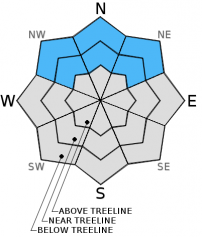| Friday | Friday Night | Saturday | |
|---|---|---|---|
| Weather: | Partly cloudy this morning then becoming sunny as the day progresses | Clear | Sunny |
| Temperatures: | 29-36 deg. F. | 16-24 deg. F. | 37-44 deg. F. |
| Mid Slope Winds: | North | Northeast | Southeast |
| Wind Speed: | 10-15 mph with gusts to 25 mph | 15-20 mph with gusts to 30 mph | 10-15 mph with gusts to 25 mph in the morning becoming light in the afternoon |
| Expected snowfall: | 0 | 0 | 0 |
| Friday | Friday Night | Saturday | |
|---|---|---|---|
| Weather: | Partly cloudy this morning then becoming sunny as the day progresses | Clear | Sunny |
| Temperatures: | 28-35 deg. F. | 17-24 deg. F. | 39-46 deg. F. |
| Ridge Top Winds: | North | Northeast | Southeast shifting to the East in the afternoon |
| Wind Speed: | 25-35 mph with gusts to 50 mph | 25-35 mph with gusts to 55 mph decreasing to 45 mph after midnight | 25-30 mph with gusts to 50 mph decreasing to 15-20 mph with gusts to 30 mph in the afternoon |
| Expected snowfall: | 0 | 0 | 0 |

























